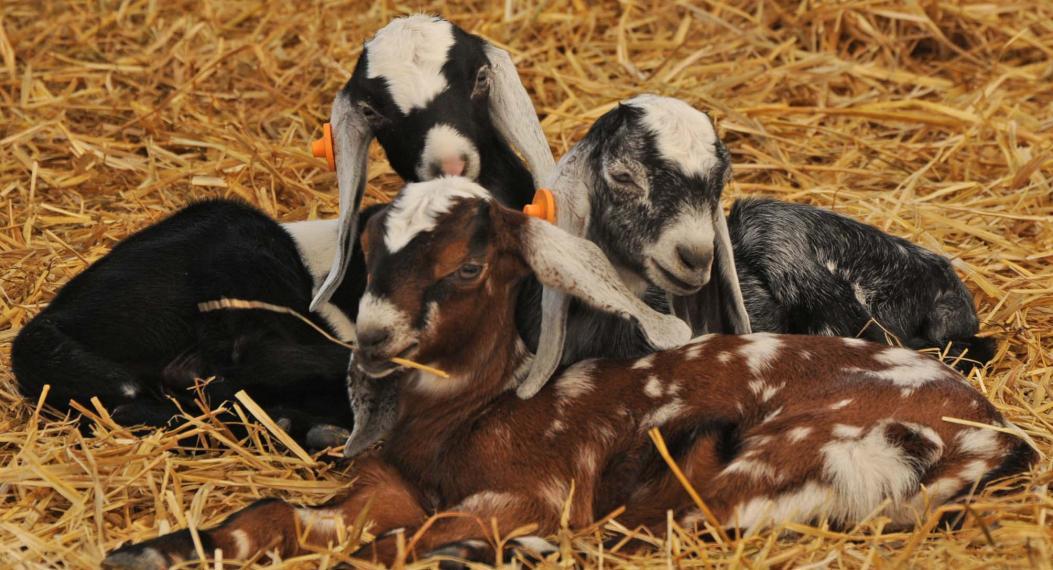What's happening to these kids? Three-year study aims to unravel why goat kid mortalities happen

To support the demand for goat products, University of Guelph researchers are involved in an intensive, three-year, Ontario-wide herd health and management study.
Prof. Cathy Bauman, Department of Population Medicine, and a team of researchers have surveyed or visited almost 60 goat farmers over the past 18 months to investigate mortalities and management practices among their herds.
The researchers are also wrapping up a project to conduct autopsies on all goat kids under four months of age that died on about half of the farms.
Typically, goat farms have either very high or very low mortality, but no one really knows why. Bauman’s survey is looking for differences in management practices between these two distinct groups by asking questions about their stocking density, ventilation and other practices.
On-farm visits will serve to investigate these practices in real time.
Additionally, the autopsies will help reveal the common causes of death and the age at which the kids are at highest risk. The researchers will try to associate these causes with the management factors they identify.
From initial survey results, researchers believe that record-keeping and colostrum- and milk-feeding management may be weak areas and a good place to start investigating on-farm. Because many kids may be born in a short time, some farms are unable to keep proper records of births, illness and mortalities, resulting in a lack of vital information for producers and veterinarians and a hurdle to resolving the mortality issue.
Colostrum management is key as well—it’s the first milk kids receive. They depend on colostrum to protect them from infections until they develop their own strong immune systems. The volume and quality of the colostrum fed may influence how susceptible kids are to infections.
Based on the autopsies, pneumonia, diarrhea and septicemia—overwhelming bacterial infections—are areas that need further research. Preliminary research also indicates that kids between the ages of seven days and weaning are at highest risk. Closer examination of the pathogens involved will help identify areas that can be targeted through vaccination, improved hygiene or management changes.
“Reducing kid mortality improves goat welfare, consumer perception of the industry and economic profitability,” says Bauman. “Identifying key risk factors in kid mortality allows us to design effective intervention strategies and reduce antibiotic use and will result in an overall healthier industry.”
Bauman is providing participants with funding to try using record-keeping software or a new paper form tailored for the goat industry to help farmers maintain their records more efficiently. She thinks this will help researchers collect data and improve record-keeping habits on the farms long-term, so producers will be better able to quantify and describe any mortalities, making it easier for veterinarians to help them resolve issues.
She says the industry is being proactive about this issue. “It’s very interested in improving the health and welfare of its herds,” she says. “No producer ever wants to lose any animals.”
The research team will begin circulating observations and statistical results this fall and offer producer workshops starting in 2020.